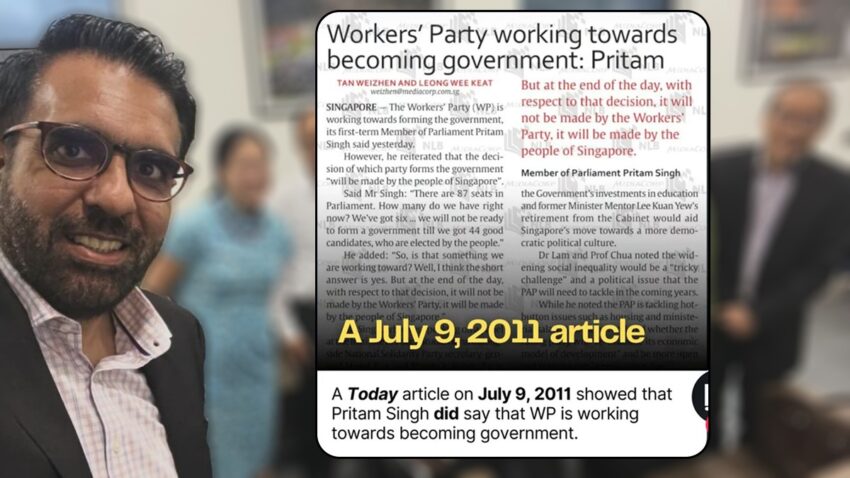So, this week, Leader of the Opposition and Workers’ Party (WP) leader Pritam Singh disputed an inaccuracy in a recent political commentary published in The Straits Times on April 17. He denied the article’s claim that the Workers’ Party aims “to form the Government at the next General Election”.
Political analyst Gillian Koh had examined the impact of the recently announced leadership transition in Singapore, focusing on Deputy Prime Minister Lawrence Wong’s political agenda ahead of the next GE. Koh wrote about the opposition’s electoral strategy, noting that the WP “said it will tilt towards the strategy of forming the government at the next GE.”
“This is false,” Singh wrote in the correction notice he issued in a Facebook post on the same day the article was published.
Mr Singh reaffirmed the Workers’ Party aims to win at least one-third of parliamentary seats, not held by the People’s Action Party, in the medium term. He stressed that he and his WP colleagues have repeatedly stated WP’s electoral goals both inside and outside Parliament.
Really?
Let’s get to the crux of the matter: does the Workers’ Party truly not want to form the government?

Over the past 15 years, WP leaders, including Mr Singh, have more than hinted at WP’s intent to become the government. In fact, they have repeatedly gone on record to say they hope to form the Government.
At a 2011 political forum organised by the Institute of Policy Studies, when asked when the Opposition would be ready to form the government, Mr Singh, one of the three panelists, said WP would form the government only after winning at least 44 seats, adding that candidates would be elected by Singaporeans.
He said: “So, is that something we are working towards? Well, I think the short answer is yes. But at end of the day, with respect to that decision, it will not be made by the Workers’ Party, it will be made by the people of Singapore.”
In 2011, Parliament had 87 seats and a party needed at least 44 seats for a clear majority to form the government. Following the forum, Mr Singh clarified that although forming part of a coalition government is not one of its aims, it is “prepared to work with other political parties in the interest of Singaporeans’. Notably, he did not correct his earlier comment regarding working toward forming the government. So there.
Now moving on to a 2015 election rally, Workers’ Party Chairman Sylvia Lim said the party would abolish Group Representation Constituencies and the Nominated Member of Parliament scheme if it formed the government.
She said the GRC scheme, created in 1988 to ensure minority representation, “is being used to bring in candidates into Parliament under the protection of a minister” and would “dilute votes and diminish voices”.
The WP would also remove NMPs as they are not elected but selected by a committee, dominated by the PAP, Ms Lim added. “If WP ever comes into power, we would abolish both schemes even though they would favour us,” she told voters during the rally.
In her speech, Ms Lim had focused on how a hypothetical Workers’ Party government would differ from the PAP.
The logical inference is that if you have never thought of forming the government, why would you even consider what you would do if you held power?
So come off it. The Workers’ Party should just say it. Yes, that it aspires to form the government. There’s no need to be coy about disclosing its ambition. The party should communicate its vision for an alternative government to Singaporeans. It should explain its positions on key issues like using financial reserves, immigration, raising the Goods and Services Tax, LGBT and public housing. Ahead of the next General Elections, it should just put forward that vision squarely with the people to tell them what does a WP Government look like.

13 thoughts on “Does the Workers’ Party truly not wish to form the government, Mr Pritam Singh?”
Comments are closed.